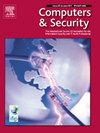Enhancing cyber safety in e-learning environment through cybersecurity awareness and information security compliance: PLS-SEM and FsQCA analysis
IF 4.8
2区 计算机科学
Q1 COMPUTER SCIENCE, INFORMATION SYSTEMS
引用次数: 0
Abstract
E-learning has revolutionized education by increasing accessibility and flexibility, but it also presents unique cybersecurity challenges. This study explores how E-Learning Engagement, Cybersecurity Awareness, and Information Security Policy Compliance Influence Cyber Safety Measures among virtual learning students. Data were collected from 398 virtual learning students and analyzed using Partial Least Squares Structural Equation Modeling (PLS-SEM) and Fuzzy-set Qualitative Comparative Analysis (fsQCA). The PLS-SEM results indicate that Cybersecurity Awareness and Information Security Policy Compliance significantly enhance Cyber Safety Measures. Additionally, E-Learning Engagement indirectly contributes to cyber safety through its positive influence on both cybersecurity awareness and policy compliance. The fsQCA results reveal that different pathways lead to improved cyber safety. For example, a high level of cybersecurity awareness combined with strong policy compliance consistently enhances cyber safety, even with moderate e-learning engagement. Alternatively, for students with lower cybersecurity awareness, active e-learning engagement paired with strict adherence to security policies also significantly improves cyber safety. These insights demonstrate that no single factor guarantees cyber safety; rather, multiple combinations of conditions can achieve positive outcomes. The study provides implications for educational institutions, highlighting the need for integrated strategies that combine enhancing student engagement with promoting cybersecurity awareness and enforcing information security policies to foster safer virtual learning environments.
求助全文
约1分钟内获得全文
求助全文
来源期刊

Computers & Security
工程技术-计算机:信息系统
CiteScore
12.40
自引率
7.10%
发文量
365
审稿时长
10.7 months
期刊介绍:
Computers & Security is the most respected technical journal in the IT security field. With its high-profile editorial board and informative regular features and columns, the journal is essential reading for IT security professionals around the world.
Computers & Security provides you with a unique blend of leading edge research and sound practical management advice. It is aimed at the professional involved with computer security, audit, control and data integrity in all sectors - industry, commerce and academia. Recognized worldwide as THE primary source of reference for applied research and technical expertise it is your first step to fully secure systems.
 求助内容:
求助内容: 应助结果提醒方式:
应助结果提醒方式:


